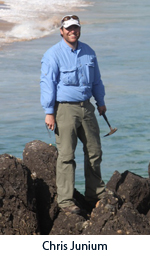Syracuse Views Summer 2025
We want to know how you experience Syracuse University. Take a photo and share it with us. We select photos from a variety of sources. Submit photos of your University experience by sending them directly to Syracuse University News at…

 Science Express provides rapid electronic publication of selected research papers that have recently been accepted for publication in Science, the premier journal of the American Association for the Advancement of Science.
Science Express provides rapid electronic publication of selected research papers that have recently been accepted for publication in Science, the premier journal of the American Association for the Advancement of Science.